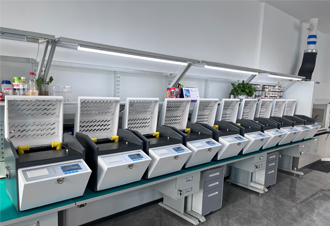 English
English



-
 Afrikaans
Afrikaans -
 Albanian
Albanian -
 Amharic
Amharic -
 Arabic
Arabic -
 Armenian
Armenian -
 Azerbaijani
Azerbaijani -
 Basque
Basque -
 Belarusian
Belarusian -
 Bengali
Bengali -
 Bosnian
Bosnian -
 Bulgarian
Bulgarian -
 Catalan
Catalan -
 Cebuano
Cebuano -
 China
China -
 China (Taiwan)
China (Taiwan) -
 Corsican
Corsican -
 Croatian
Croatian -
 Czech
Czech -
 Danish
Danish -
 Dutch
Dutch -
 English
English -
 Esperanto
Esperanto -
 Estonian
Estonian -
 Finnish
Finnish -
 French
French -
 Frisian
Frisian -
 Galician
Galician -
 Georgian
Georgian -
 German
German -
 Greek
Greek -
 Gujarati
Gujarati -
 Haitian Creole
Haitian Creole -
 hausa
hausa -
 hawaiian
hawaiian -
 Hebrew
Hebrew -
 Hindi
Hindi -
 Miao
Miao -
 Hungarian
Hungarian -
 Icelandic
Icelandic -
 igbo
igbo -
 Indonesian
Indonesian -
 irish
irish -
 Italian
Italian -
 Japanese
Japanese -
 Javanese
Javanese -
 Kannada
Kannada -
 kazakh
kazakh -
 Khmer
Khmer -
 Rwandese
Rwandese -
 Korean
Korean -
 Kurdish
Kurdish -
 Kyrgyz
Kyrgyz -
 Lao
Lao -
 Latin
Latin -
 Latvian
Latvian -
 Lithuanian
Lithuanian -
 Luxembourgish
Luxembourgish -
 Macedonian
Macedonian -
 Malgashi
Malgashi -
 Malay
Malay -
 Malayalam
Malayalam -
 Maltese
Maltese -
 Maori
Maori -
 Marathi
Marathi -
 Mongolian
Mongolian -
 Myanmar
Myanmar -
 Nepali
Nepali -
 Norwegian
Norwegian -
 Norwegian
Norwegian -
 Occitan
Occitan -
 Pashto
Pashto -
 Persian
Persian -
 Polish
Polish -
 Portuguese
Portuguese -
 Punjabi
Punjabi -
 Romanian
Romanian -
 Russian
Russian -
 Samoan
Samoan -
 Scottish Gaelic
Scottish Gaelic -
 Serbian
Serbian -
 Sesotho
Sesotho -
 Shona
Shona -
 Sindhi
Sindhi -
 Sinhala
Sinhala -
 Slovak
Slovak -
 Slovenian
Slovenian -
 Somali
Somali -
 Spanish
Spanish -
 Sundanese
Sundanese -
 Swahili
Swahili -
 Swedish
Swedish -
 Tagalog
Tagalog -
 Tajik
Tajik -
 Tamil
Tamil -
 Tatar
Tatar -
 Telugu
Telugu -
 Thai
Thai -
 Turkish
Turkish -
 Turkmen
Turkmen -
 Ukrainian
Ukrainian -
 Urdu
Urdu -
 Uighur
Uighur -
 Uzbek
Uzbek -
 Vietnamese
Vietnamese -
 Welsh
Welsh -
 Bantu
Bantu -
 Yiddish
Yiddish -
 Yoruba
Yoruba -
 Zulu
Zulu
high current function generator
Understanding High Current Function Generators
In the realm of electronics and signal processing, function generators are indispensable tools that provide versatile waveform outputs for testing and designing circuits. Among these, high current function generators are particularly significant due to their ability to produce high-output currents essential for various applications. These devices play a critical role in sectors such as telecommunications, semiconductor testing, and research laboratories.
What is a High Current Function Generator?
A high current function generator is a specialized piece of equipment that produces electrical waveforms with significantly higher output current capabilities compared to standard function generators. While traditional function generators might limit their output to a few hundred milliamps, high current function generators can offer output currents in excess of several amps, making them suitable for testing power electronics, driving loads, and simulating real-world conditions.
Key Characteristics
High current function generators are known for several key characteristics
1. Output Waveforms They are capable of generating various types of waveforms including sine, square, triangle, sawtooth, and arbitrary waveforms, allowing engineers and researchers to simulate different conditions in their tests.
2. Adjustable Parameters Users can usually modify frequency, amplitude, and offset for precise testing scenarios. This flexibility aids in the comprehensive analysis of electronic components.
3. High Accuracy and Stability Due to the critical nature of the applications they serve, high current function generators are designed to maintain high accuracy and stability in their output. This reliability is essential when precision is required in experimental setups.
4. Load Handling The ability to handle different types of loads, including resistive, inductive, and capacitive loads, is vital. High current function generators are built robustly to cater to various testing environments.
high current function generator

5. Safety Features Given the high outputs involved, these generators are equipped with numerous safety features such as overcurrent protection, which automatically shuts off the device if current exceeds safe levels.
Applications
The applications of high current function generators span across several fields
- Power Electronics Testing In the development and testing of power supplies, inverters, and converters, these generators simulate load conditions to examine performance and reliability.
- Component Testing Engineers use high current function generators to assess the electrical characteristics and tolerances of capacitors, inductors, and other components.
- Research and Development In research settings, they provide essential testing capabilities for new technologies and concepts, particularly in renewable energy and electric vehicle sectors.
- Educational Purposes Many educational institutions employ high current function generators in laboratories, enabling students to experiment with real circuit dynamics and understand complex concepts.
Conclusion
High current function generators are vital instruments that empower engineers, researchers, and educators by providing robust, flexible, and accurate waveform generation capabilities. Their importance in various fields, from power electronics to research and education, underscores the ongoing need for advanced testing equipment in the evolving landscape of technology. As industries continue to seek improved performance and new innovations, the role of high current function generators will undoubtedly expand, driving further developments in electronic design and testing methodologies.
-
Ensuring SF₆ Gas Safety: Introducing PUSH’s Integrated SF₆ Analyzer for Dew Point, Purity, and Decomposition MonitoringNewsJul.10,2025
-
Exploring the Main Types of Industrial Endoscopes and Their Applications Across IndustriesNewsJul.04,2025
-
Testing Equipment Industry Sees Major Advancements in 2025: Smart & Precision Technologies Lead the WayNewsJun.06,2025
-
Applications of Direct Current Generators in Renewable Energy SystemsNewsJun.05,2025
-
Hipot Tester Calibration and Accuracy GuidelinesNewsJun.05,2025
-
Digital Circuit Breaker Analyzer Features and BenefitsNewsJun.05,2025



